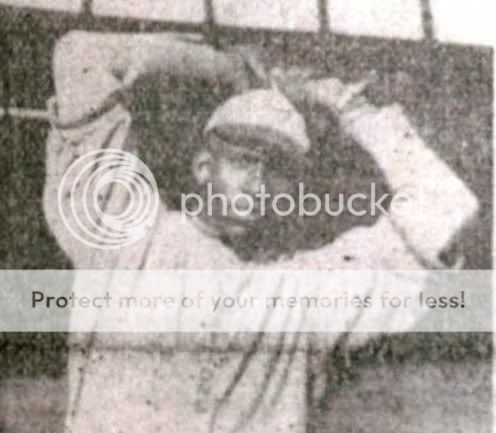He died in poverty in Chicago 40 years ago and lay in an unmarked grave before money was raised for a headstone.
His lead researcher credits 363 wins to him through 32 years of Negro League and semi-pro ball– and those are just the wins he’s certain of.
The researcher calls the pitcher he’s spent a decade studying “Satchel Paige 20 years before he was Satchel Paige.”
Meet John Donaldson, one of the greatest baseball players history forgot.
Donaldson pitched on one level or another from 1908 to 1940, crossing paths with Negro League immortals like Paige, Ray Dandridge and Buck O’Neil while also facing white players around the Midwest in semi-pro competition. But by the time his lead researcher Peter Gorton heard of him ten years ago, his story had been relegated to obscurity.
Gorton was approached by his former high school history teacher who was writing a history of black baseball in Minnesota and wanted him to pen a chapter that would include Donaldson, who once pitched in a small town near where Gorton is from. A research group calling itself the Donaldson Network has since developed, documenting the story.
“It’s been buried for almost a hundred years, and there’s a reason for that, and that is, it’s not something that’s sitting right on the top,” said Gorton, an IT worker by day who lives in Minneapolis with a wife and two small children. “You have to dig around in it and try and figure it out, which we’re trying to do.”
The history of Major League Baseball is well-documented, and sites like Baseball-Reference make information on any ex-big league player instantly accessible. It’s harder to find much on the minor leagues and Negro Leagues.
Gorton estimates his group has accounted for 60 percent of Donaldson’s career, thus far. The network only counts verified statistics and, for instance, doesn’t include 100 games where it is uncertain of his strikeout totals. “The Donaldson Network is not in the business of speculating what might have happened,” Gorton said.
Donaldson’s wife died a couple years after him, and no descendants or family histories are known of. Gorton said old newspaper accounts provide the primary source of information. Routinely, visitors to his Web site send him photocopies of articles in the mail. Gorton also said he sometimes calls strangers in towns Donaldson’s teams visited and has them look up newspaper accounts of games.
Donaldson was a marquee name, able to help teams erase debts with late-season appearances that drew thousands. “In John Donaldson’s case, in the Midwest everybody knew who he was,” Gorton said.
Film footage exists of Donaldson, included here with Gorton’s permission. A scout named John Klima who saw the film told me in an email interview that Donaldson would have been a staff ace in the majors. He called Donaldson, “A rubber arm, durable workhorse who should have been a front-end major league starter for many years.”
In later years, Donaldson worked for the Chicago White Sox, scouting a young Willie Mays in the Negro Leagues.
So why isn’t Donaldson remembered? There are a few possibilities. Some may say his statistics aren’t noteworthy since they came against a mix of competition, some of it inferior to pro ball. Gorton also said Donaldson may have had a rift with O’Neil who enchantingly recounted memories of Paige and others in the Ken Burns Baseball mini-series that aired on PBS in 1994. Assuming the rift existed, perhaps it’s one reason there’s no mention of Donaldson in the series or accompanying book (coincidentally, Donaldson and O’Neil were among 39 Negro League finalists for the Hall of Fame in 2006, though neither was inducted.)
There may be a deeper reason for the lack of recognition for Donaldson. One of Gorton’s acquaintances through his research is John Thorn, a veteran baseball author who served as senior creative consultant on the Baseball series and, like Gorton, is a member of the Society for American Baseball Research. Thorn told me in a telephone interview that baseball feels no responsibility to honor latter day players, white or black.
“Major League Baseball has made the judgment that 1/10th of 1 percent of all baseball fans cares about anything that happened prior to World War II, and they’re not going to devote very much of their resources to pleasing that 1/10th of 1 percent,” Thorn said. “You can’t argue with it as a business decision. You can argue with it as a philosophical or historical question because if baseball is an important institution, then it ought to be important to learn where it came from and how it grew.”
I’ll close with the footage of Donaldson, hand-cranked at Fergus Falls, Minnesota on August 16, 1925. Donaldson faced off that day against Joe Jaeger who made two relief appearances for the Chicago Cubs in 1920, and advertisements for the game called Donaldson “the colored wonder pitcher.”
If anyone has an opinion on Donaldson’s technique, Gorton would love to hear it.
(Postscript: More quotes from John Thorn)
